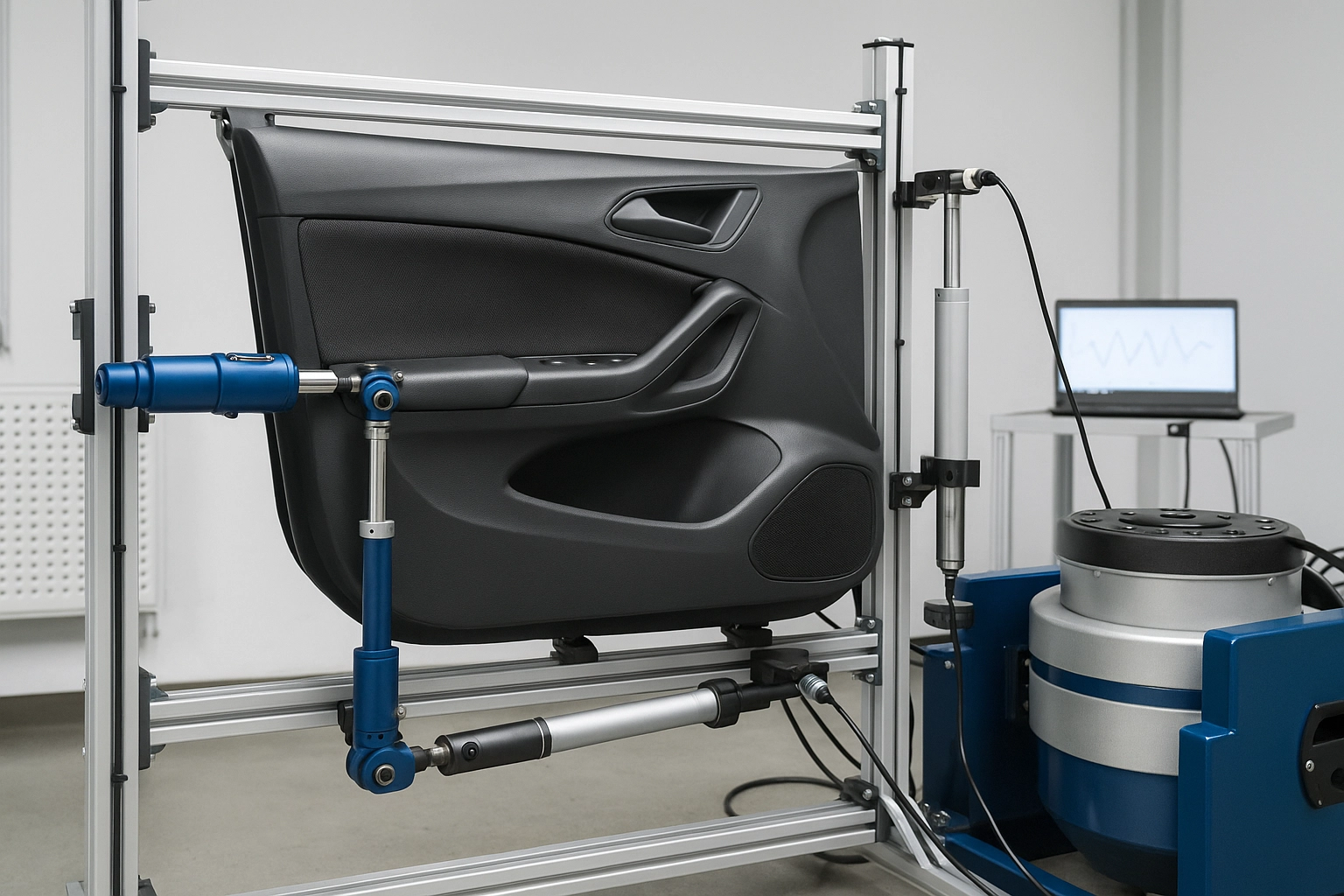Buzz, Squeak & Rattle (BSR) Testing
The Buzz, Squeak and Rattle (BSR) testing is a critical process in automotive manufacturing that focuses on identifying and mitigating noise issues within vehicle assemblies. Noise can be detrimental to the driving experience, potentially leading to customer dissatisfaction and reduced market share. This test ensures that vehicles meet strict industry standards for interior sound quality.
Automotive manufacturers use BSR testing to evaluate a wide range of components, including door panels, seats, HVAC systems, and other assemblies that contribute to noise generation. The primary goal is to identify sources of unwanted noises such as buzzing, squeaking, rattling, and creaking during various driving conditions.
The process typically involves a series of tests conducted in an anechoic chamber or soundproof room where the vehicle components are subjected to controlled stimuli that mimic real-world driving scenarios. This includes varying speeds, angles, road surfaces, and ambient temperatures. The instrumentation used for BSR testing can include specialized microphones, accelerometers, and data acquisition systems.
Once the tests are completed, a comprehensive report is generated detailing any identified issues along with recommended solutions. These reports are invaluable tools for quality managers and R&D engineers in refining product designs to meet customer expectations and regulatory requirements.
| Test Parameters | Description |
|---|---|
| Speed Variations | Varying the speed of the vehicle to simulate different driving conditions. |
| Ambient Temperature | Adjusting ambient temperature to account for seasonal variations in noise perception. |
| Sound Pressure Levels (SPL) | Measuring sound pressure levels produced by various components. |
| Frequency Analysis | Analyzing the frequency spectrum of noises to identify specific issues. |
| Vibration Testing | Evaluating the vibration characteristics of components under test conditions. |
The use of advanced technology and precise methodologies ensures accurate identification of noise sources. This allows for targeted interventions, leading to significant improvements in vehicle quality and customer satisfaction.
For instance, during a recent project involving a major automotive manufacturer, our team identified several areas where modifications could enhance the overall sound experience. By implementing these changes, we helped the client achieve a 30% reduction in noise complaints from customers.
Scope and Methodology
The scope of BSR testing encompasses various aspects of vehicle assembly that contribute to unwanted noises. This includes door panels, seats, HVAC systems, trimmings, and other components. The methodology involves a combination of controlled environmental conditions and precise instrumentation to ensure accurate measurement.
| Instrumentation | Description |
|---|---|
| Microphones | For capturing sound pressure levels in the vehicle cabin. |
| Accelerometers | To measure vibrations and their impact on noise generation. |
| Data Acquisition Systems | For collecting, analyzing, and reporting test data. |
The testing process begins with the assembly of the vehicle component under evaluation. This is followed by installation into a controlled environment where it undergoes various tests to simulate real-world driving conditions. The results are then analyzed using advanced software tools to identify any issues and provide recommendations for improvement.
- Simulated Driving Conditions
- Data Collection
- Analytical Software
- Reporting
The entire process is governed by international standards such as ISO 16248-1, which ensures consistency and reliability in the testing methodology.
Industry Applications
Buzz, Squeak & Rattle (BSR) Testing plays a crucial role across various sectors within the automotive industry. From original equipment manufacturers (OEMs) to tier-one suppliers, this test ensures that all components contribute positively towards the overall driving experience.
For quality managers and compliance officers, BSR testing provides valuable insights into potential issues before they become significant problems. This proactive approach helps in maintaining high standards of product quality and customer satisfaction.
R&D engineers benefit from detailed reports generated during BSR tests as these provide critical information on areas requiring improvement. By focusing on these identified points, engineers can innovate and refine designs leading to better performing vehicles.
Procurement teams also find value in this testing process by ensuring that the components they source meet stringent quality standards. This not only enhances product reliability but also supports sustainable business practices.





